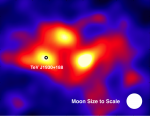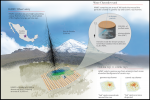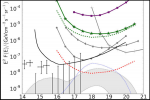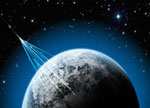The Cherenkov Telescope Array (CTA) will detect gamma rays with unprecedented precision. To do this, physicists have designed not only new telescope optics and cameras but also the required front-end electronics, including a new multichannel digitizer, dubbed TARGET.
IceCube data are stubbornly showing us only a glimpse of the extreme universe at a time. Ever since the discovery of a flux of TeV-PeV astrophysical neutrinos, scientists have been studying various potential sources of these neutrinos, and little by little, learning details about the composition of the cosmic neutrino flux.
The ARA Collaboration announces today the first results using data taken during 10 months in 2013. Researchers performed a search for UHE neutrinos that resulted in no neutrino candidates but allows setting a neutrino flux limit in the energy range where most UHE neutrinos are expected to be observed.










